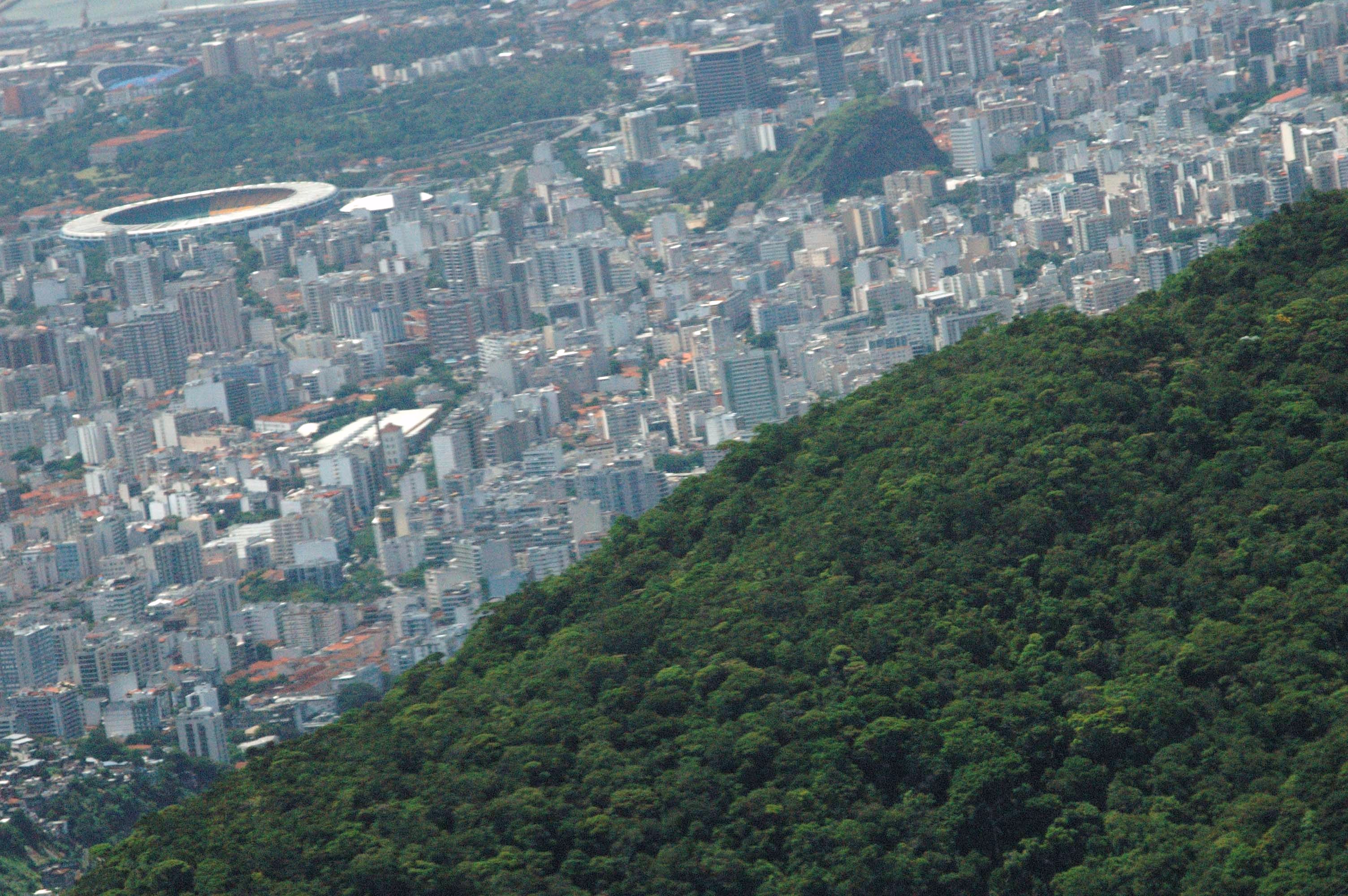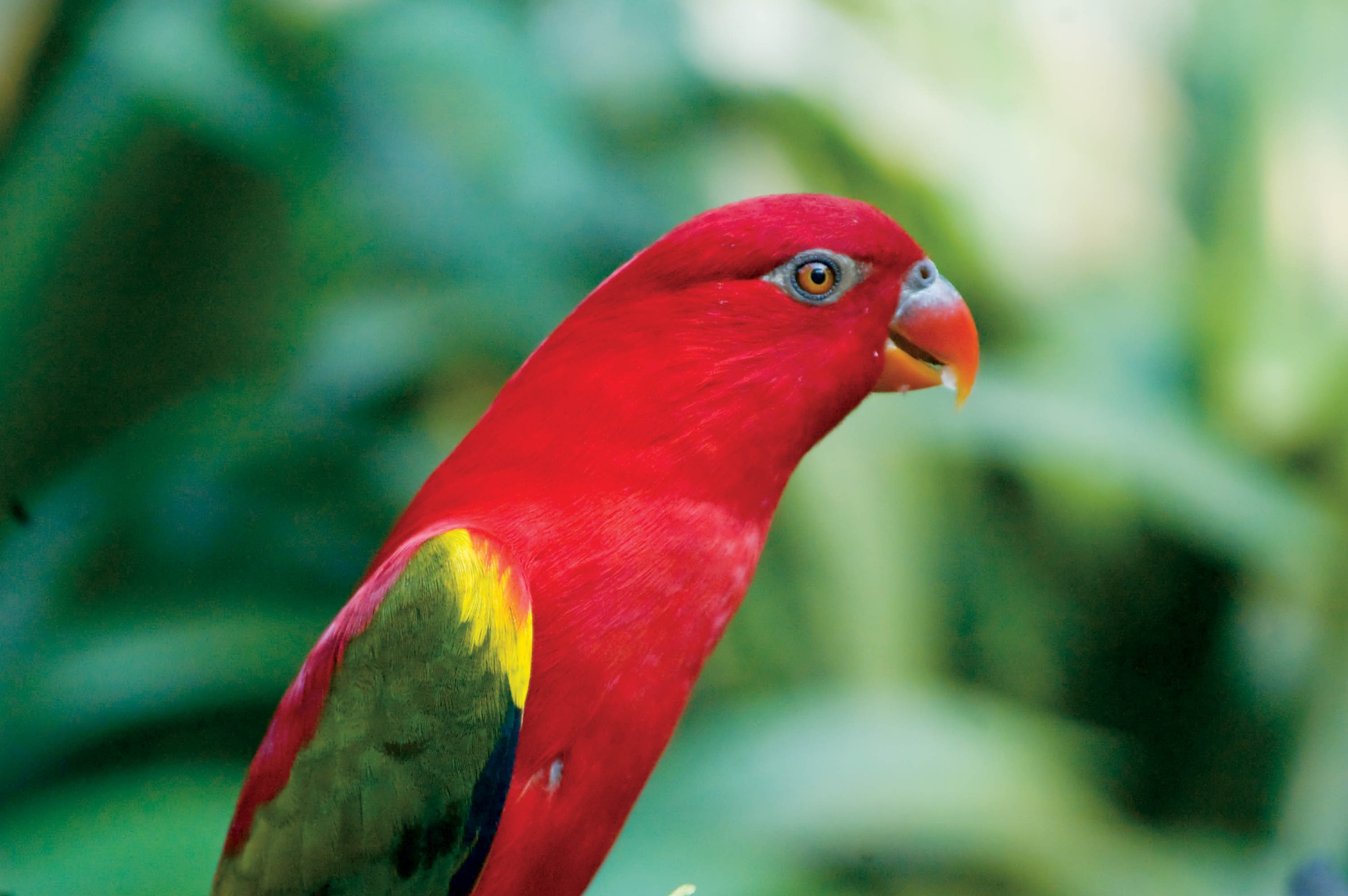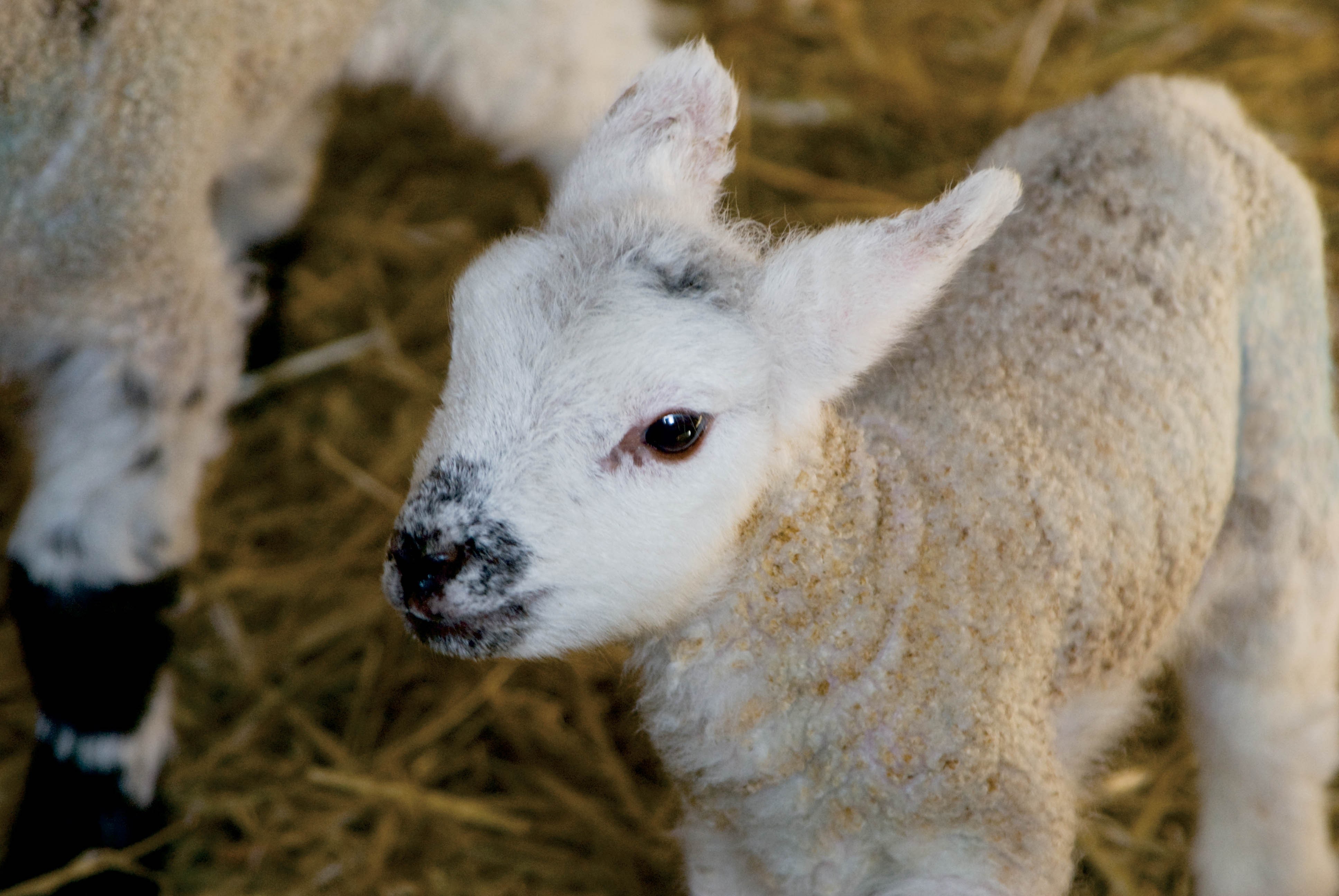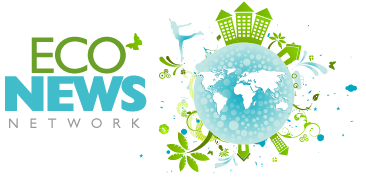Periodically, Eco News Network features eco essays written by individuals with the environment close to their heart. The opinions expressed in these essays are those of the writers. Here, Dr. Michael Charles Tobias and Jane Gray Morrison of Dancing StarFoundation share their thoughts about the love of birds and what they call a “new nature” that better serves the purpose of symbiosis on Earth.
 Decades ago an environmental journal of high standing ran a story asking readers whether anyone who eats animals can rightly claim to be an environmentalist. The majority of those who wrote in their opinions asserted that there was no relevant connection. At the time Jane and I completely disagreed.
Decades ago an environmental journal of high standing ran a story asking readers whether anyone who eats animals can rightly claim to be an environmentalist. The majority of those who wrote in their opinions asserted that there was no relevant connection. At the time Jane and I completely disagreed.
And we do so as fervently today as ever. The biological fall-out from the consumption of animals has been assiduously documented in virtually every sphere: abstraction of a majority of the world’s drinking water, and the pollution of rivers and creeks; emissions into the atmosphere of greenhouse gases like methane and nitrous oxide; injection into the soil and water of the majority of known antibiotics; the use of a majority of corn and soy to feed vertebrates that will be slaughtered for human consumption, in the process often resulting in the biologically-tragic trade-off of primary standing forest - with all of its indigenous organisms - for a depauperate monoculture, and so on.
Indeed, in a recent essay in Fortune Magazine (May 19, 2014, p.97) examining the value of fresh water, and its inordinately skewed distribution cycles, author Brian Dumaine documents the fact (using information from the Dutch non-profit Water Footprint Network) that a single cheeseburger requires “968 gallons of water” to produce it, the majority of that, or “924 gallons” estimated to be the amount of feed for a cow required for that mammal’s contribution to the “eight-ounce patty.”
 In tabulating the myriad crises afflicting the biosphere, resulting from the activities of but one of the four species of the family Hominidae of Great Apes - ourselves - what persistently stands out as the central pillar of damage is not necessarily human nature, per se. Rather, the totality of ecological mayhem is the result of our species’ behavior in its entirety. Individuals are capable of noble choices. There is less likelihood of this occurring at the species level, however. Our sheer quantity is at odds with our best individual intentions. We might, by the end of this century equal in number that of the most multitudinous of bird species currently flying across the planet, the Red-billed Quelea (Quelea quelea), some estimates for whom have hit 10 billion individuals. This lovely little 4-to-5 inch high perching bird, a member of the weaver family, Ploceidae, occupies steppes and savannas of sub-Saharan Africa. As a rule, they do not enter the forests and their flocks are of such immensity that it can take five hours for a single population to move across any given area, about the same time it would take during rush hour on Friday night to traverse by automobile the entire, approximately 4,000 square kilometers of metropolitan Los Angeles County.
In tabulating the myriad crises afflicting the biosphere, resulting from the activities of but one of the four species of the family Hominidae of Great Apes - ourselves - what persistently stands out as the central pillar of damage is not necessarily human nature, per se. Rather, the totality of ecological mayhem is the result of our species’ behavior in its entirety. Individuals are capable of noble choices. There is less likelihood of this occurring at the species level, however. Our sheer quantity is at odds with our best individual intentions. We might, by the end of this century equal in number that of the most multitudinous of bird species currently flying across the planet, the Red-billed Quelea (Quelea quelea), some estimates for whom have hit 10 billion individuals. This lovely little 4-to-5 inch high perching bird, a member of the weaver family, Ploceidae, occupies steppes and savannas of sub-Saharan Africa. As a rule, they do not enter the forests and their flocks are of such immensity that it can take five hours for a single population to move across any given area, about the same time it would take during rush hour on Friday night to traverse by automobile the entire, approximately 4,000 square kilometers of metropolitan Los Angeles County.
But unlike that human traffic, the Red-billed Quelea, and the other nearly 10,000 species and 22,000 subspecies of known avifauna worldwide exert a light footprint, a degree of non-violence that offers some measure of an ideal: if only we might find the means to translate our observations of birds into something that might help us become better stewards of nature, reducing our own impact upon this precious planet.
This nature of treading gently is critical to understanding humanity’s role in the future of the world. We cannot amend what has happened; the hundreds-of-millions of people that have been murdered, or the trillions of other sentient beings we have annihilated. But we can, starting today, initiate a “new nature” that better serves the purpose of symbiosis on Earth.
Our Ability to Change
From Hippocrates and Mahavira to Lao Tsu and Christ, a singular injunction emergent within every compelling ethical system can be summarized in the ancient Jain insight, “Parasparopagraho Jivanam” - All life is bound together by mutual support and interdependence (Tattvarthasutra, 5.21). The text was composed by Umasvami during the second century BCE. This is also articulated in an even more ancient Jain text, attributed to Mahavira (599-527 BCE) himself, the Acaranga Sutra, first translated into English in 1884 by psychologist Hermann Jacobi. This “golden rule” inherent to Jain sacred ecology states, “That which you consider worth destroying is (like) yourself…”
 We can chose to be kind, to strive to love unconditionally. The opportunities spread illimitably before us, every day. Our ability to change may be the one crucial ingredient in our nature that will save us and, by saving ourselves, rescue all others from the risk of oblivion into which our consumptive fever has collectively placed them.
We can chose to be kind, to strive to love unconditionally. The opportunities spread illimitably before us, every day. Our ability to change may be the one crucial ingredient in our nature that will save us and, by saving ourselves, rescue all others from the risk of oblivion into which our consumptive fever has collectively placed them.
This potential for ethical transformation in a heartbeat is the only viable answer to the notion that such global shadows as climate change, the sixth wave of extinctions, our ruination of the oceans, and our chemical toxification of soil and fresh water have left us no more time to effect positive change. That is not true. There is time.
But the key, in our opinion, to inaugurating this change is by clearly voicing the aggregates across the planet wherein the severest numbers of sensate beings are subject to our colossal trespass. We call those aggregates “pain points” whose  cartography is mirrored by the very geography of our consumption of other animals. For a thorough discussion of “pain points,” see our freely downloadable book, God’s Country: The New Zealand Factor (http://www.dancingstarbooksfilms.org/gods-country-the-new-zealand-factor/)
cartography is mirrored by the very geography of our consumption of other animals. For a thorough discussion of “pain points,” see our freely downloadable book, God’s Country: The New Zealand Factor (http://www.dancingstarbooksfilms.org/gods-country-the-new-zealand-factor/)
Amongst venture philanthropists, animal rights activists, physicians who are socially and responsibly engaged, and dieticians who care about not only healthy people but a healthy planet, we have witnessed in recent years an increasing emphasis on new technologies that will eventually launch a revolution of low-impact, carbon neutral non-animal replacement protein and micronutrients as permanent substitutes for the killing of animals.
Until that day, there are powerful choices each individual can make to assist along the way: short-term emergency relief efforts for the more than 100 billion vertebrates (not including the probably trillions of aquatic individuals) massacred for our leisure whims or implacable hunger. With nearly one billion malnourished humans, and growing inequality gaps throughout nearly every nation - as the human population explosion continues to engender something like a Los Angeles ever three weeks - these relief initiatives demand a moral standing be given to other species. Without such honor codes, the notion of universal compassion is a hoax. In absence of genuine peace treaties between our species and all others, we will remain biologically isolated, a seismic insult to a planet otherwise determined by fellowship, not discord; by ecosystems that work together, not in greedy opposition.
When television pundits jockeying for airtime insist that we are already past the point of no return, the simple and honest riposte should be: not so! Try saving the spider in your bathtub; harm not the birds; return the lost bear cub to her mother; plant native seedlings; work to increase the amount of integral green space in your community; be generous, become philanthropic; vote; give legal standing back to trees and to shrubs, to flowering plants and the humble worms who turn over the soil on our behalf. Use not such words as “pest” or “weed,” for they, too, are living beings who crave life. They are not biology, strictly speaking, but biography, as American philosopher Tom Regan has long advocated. Work to eradicate bias, racism, nutritional and ecological illiteracy; to empower women and girls; to help shoulder the quest for universal healthcare and all of the other necessities of a dignified life, not just for those next door, but in adjoining nations.
 But most of all, realize that we can combat the habit of doom-saying by sincere and easily effected efforts to soften the blow upon others, to consume no animals, step on no ants, embrace all the old adages like “Love is all you need.”
But most of all, realize that we can combat the habit of doom-saying by sincere and easily effected efforts to soften the blow upon others, to consume no animals, step on no ants, embrace all the old adages like “Love is all you need.”
In recognizing the immediate needs of sentient beings on our very doorstep, we can refute the seemingly irrefutable; defy the odds of melting glaciers; staunch the tide of pessimism with an uplifting science of the heart that recognizes all beings as precious and critical to the functioning biosphere, whose “free” services we more than ever depend upon for our own humble survival.
This is the essence of sacred ecology: the realization that common sense gestures of everyday kindness represent our greatest endowment - what should be deemed a normal reflex of compassion - and the most plausible scenario for sustainably re-inventing our future.
From “The Ecology of Care: Common Sense That Is Sacred”
© By Michael Charles Tobias & Jane Gray Morrison
All photographs used with permission. Copyright M. C. Tobias/J. G. Morrison
The authors are contributors to Eco News Network. The opinions expressed in this essay are those of the writers.
About the Authors
Dr. Michael Charles Tobias (www.michaeltobias.org) is a global ecologist whose field research has taken him to over 90 countries. He has worked in ecological ant hropology, bio-cultural ethics, and large-scale biodiversity conservation; eco-restoration, the saving of endangered species, animal rights, and has a particular focus upon the future prospects for biological evolution. His nearly 50 books (non-fiction as well as fiction) and more than 170 films have been read and broadcast throughout the world. Recipient of the “Courage of Conscience Prize” and a myriad of other awards and distinctions, Tobias has been a Professor at numerous universities and is the President of the Dancing Star Foundation. Michael’s most recent book, Hope On Earth: A Conversation (co-authored with Dr. Paul Ehrlich of Stanford, and Additional Commentary from Dr. John Harte of UC-Berkeley) comes out this Earth Day from the University of Chicago Press.
hropology, bio-cultural ethics, and large-scale biodiversity conservation; eco-restoration, the saving of endangered species, animal rights, and has a particular focus upon the future prospects for biological evolution. His nearly 50 books (non-fiction as well as fiction) and more than 170 films have been read and broadcast throughout the world. Recipient of the “Courage of Conscience Prize” and a myriad of other awards and distinctions, Tobias has been a Professor at numerous universities and is the President of the Dancing Star Foundation. Michael’s most recent book, Hope On Earth: A Conversation (co-authored with Dr. Paul Ehrlich of Stanford, and Additional Commentary from Dr. John Harte of UC-Berkeley) comes out this Earth Day from the University of Chicago Press.
Jane Gray Morrison is an author, ecologist and filmmaker who has done field work  in dozens of countries, productions for many networks around the world, and written numerous books, including God’s Country: The New Zealand Factor, Donkey: The Mystique of Equus Asinus, and Sanctuary: Global Oases of Innocence (www.sanctuary-thebook.org). She has served as a Director on several arts organizations, and is the Executive Vice President of Dancing Star Foundation. Among her recent film productions are the PBS feature documentaries, No Vacancy, and Hotspots (www.hotspots-thefilm.org).
in dozens of countries, productions for many networks around the world, and written numerous books, including God’s Country: The New Zealand Factor, Donkey: The Mystique of Equus Asinus, and Sanctuary: Global Oases of Innocence (www.sanctuary-thebook.org). She has served as a Director on several arts organizations, and is the Executive Vice President of Dancing Star Foundation. Among her recent film productions are the PBS feature documentaries, No Vacancy, and Hotspots (www.hotspots-thefilm.org).
